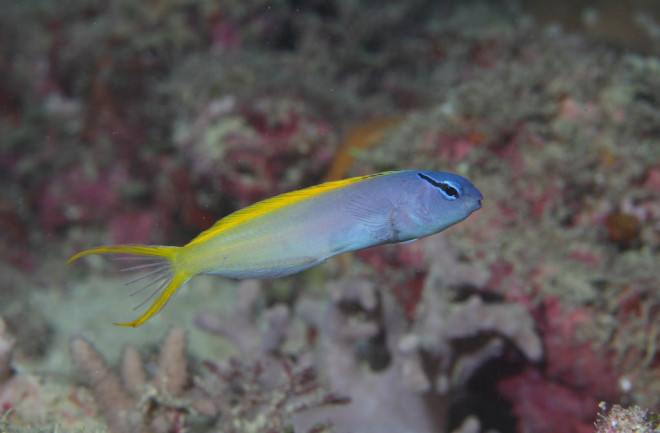Meiacanthus atrodorsalis—a pretty little fish with a venomous bite. Photo by Klaus Stiefel via Flickr "Did you tell her the one about George Losey and the blenny?" Rich Pyle asked with a knowing smirk. Pyle and I were sitting in the living room of legendary ichthyologist Jack Randall for a piece I was writing about him for Hakai Magazine. "It's a good venom story," Pyle continued, grinning. Randall's eyes lit up with mischievious joy as he launched into the tale. He and George Losey were invited to Guam to bear witness to a massive crown of thorns sea star invasion, he explained ("It was one overlapping another as far as you could see," he recalled; "They decimated the corals of the whole northern coast"). While he and Losey were diving, Randall saw a small blenny—one of a group of blennies that he knew Losey had taken an interest in. Since he had a three-pronged sling-style spear on him, Randall caught the fish, which remained wriggling on the end of his spear tip. He asked Losey if he wanted it to examine later, and Losey did, but he didn't have any containers to put it in. So, Losey did what seemed like the obvious thing: he tucked the creature into his swim trunks. "Well, it has a venomous bite..." Randall said laughing—a fact which was unknown at the time. "It bit him right here, on the belly," Randall gestured, "and he let out a yelp!" That was how George Losey first discovered the venomous nature of fang blennies in the genus Meiacanthus, Randall explained—by making the mistake of putting one in his shorts.
Beware the blenny's bite: scientists uncover the toxins in fang blenny venom

Newsletter
Sign up for our email newsletter for the latest science news
0 free articles left
Want More? Get unlimited access for as low as $1.99/month
Stay Curious
Sign up for our weekly newsletter and unlock one more article for free.
View our Privacy Policy
Want more?
Keep reading for as low as $1.99!
Already a subscriber?
Find my Subscription
More From Discover
Stay Curious
Subscribe
To The Magazine
Save up to 40% off the cover price when you subscribe to Discover magazine.
Copyright © 2025 LabX Media Group
